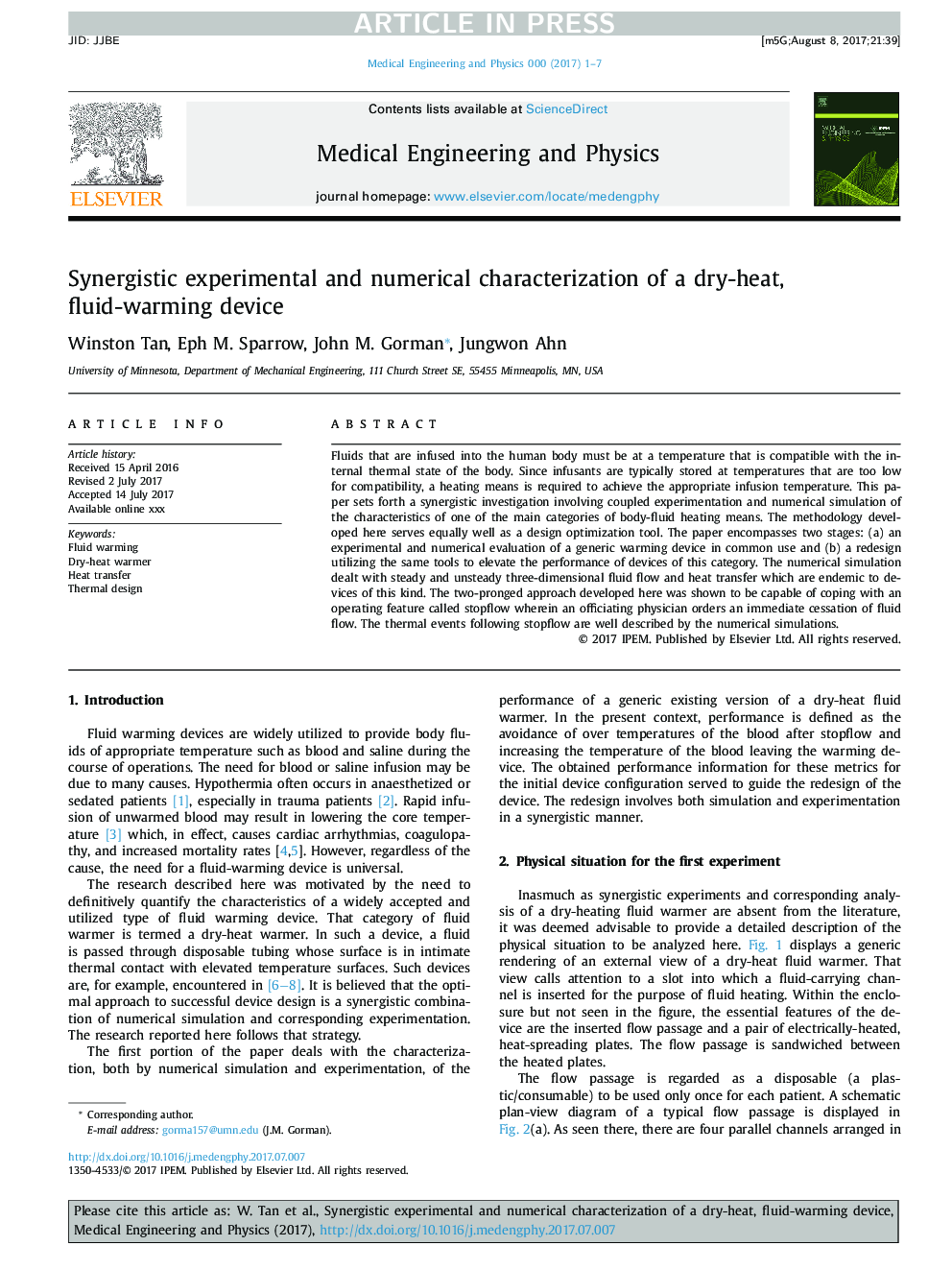| Article ID | Journal | Published Year | Pages | File Type |
|---|---|---|---|---|
| 7237669 | Medical Engineering & Physics | 2017 | 7 Pages |
Abstract
Fluids that are infused into the human body must be at a temperature that is compatible with the internal thermal state of the body. Since infusants are typically stored at temperatures that are too low for compatibility, a heating means is required to achieve the appropriate infusion temperature. This paper sets forth a synergistic investigation involving coupled experimentation and numerical simulation of the characteristics of one of the main categories of body-fluid heating means. The methodology developed here serves equally well as a design optimization tool. The paper encompasses two stages: (a) an experimental and numerical evaluation of a generic warming device in common use and (b) a redesign utilizing the same tools to elevate the performance of devices of this category. The numerical simulation dealt with steady and unsteady three-dimensional fluid flow and heat transfer which are endemic to devices of this kind. The two-pronged approach developed here was shown to be capable of coping with an operating feature called stopflow wherein an officiating physician orders an immediate cessation of fluid flow. The thermal events following stopflow are well described by the numerical simulations.
Keywords
Related Topics
Physical Sciences and Engineering
Engineering
Biomedical Engineering
Authors
Tan Winston, Eph M. Sparrow, John M. Gorman, Ahn Jungwon,
